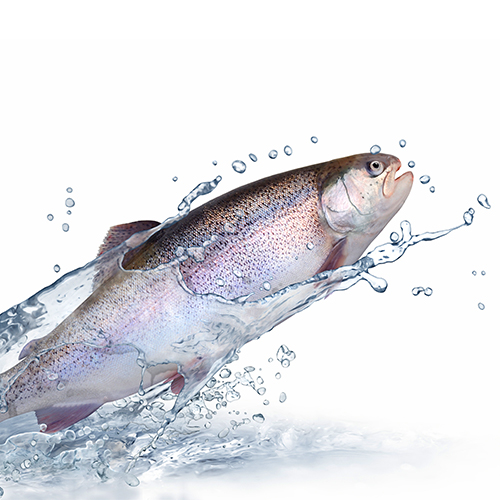
The development of sustainable aquafeeds faces a significant challenge due to the reliance on fish meal and fish oil. Moreover, increasing the inclusion of plant ingredients is undesirable as it puts additional pressure on resources like arable land, freshwater, and fertilizers. To address this, alternative ingredients that can refine and utilize organic side streams, such as insects, are being explored. Growing evidence suggests that incorporating insect ingredients in aquafeeds offers a sustainable alternative, and substantial progress has been made in this field in recent years.
The objective of this chapter is to provide a comprehensive and systematic analysis of available data on the impact of insects in aquafeeds. A systematic search and collection of relevant literature were performed using databases such as Web of Science and NCBI. This search resulted in the inclusion of 91 scientific papers from peer-reviewed journals, encompassing a dataset of 415 experimental diets. The dataset includes 35 different aquatic species and 14 insect species, making it a near-complete representation of credible publications on this subject.
The constructed dataset comprises information on aquatic species, insect species, dietary composition (including amino acids, fatty acids, and proximate composition), and performance outputs (such as growth performance indicators and nutrient digestibility). Regression models and principal component analyses were conducted on the collected meta-data.
The results of the meta-analysis revealed significant variation in the maximum threshold for insect inclusion in aquafeeds, ranging from 4% to 37%. This variation was influenced by factors such as the trophic level of aquatic species, the insect species used, the statistical method employed, and the output parameter assessed. Based on the findings, it is suggested that a maximum threshold of 25-30% inclusion of insects in aquafeeds would ensure uncompromised performance.
However, certain limitations were identified that restrict the higher inclusion of insects in aquafeeds. These include reduced protein digestibility, imbalanced amino acid profiles, and increasing levels of saturated fatty acids. Addressing these factors is crucial for optimizing the utilization of insects in aquafeeds and maximizing their potential as a sustainable alternative.
Mealworms, the larval stage of darkling beetles (Tenebrio molitor), have gained attention as a potential ingredient in aquatic animal nutrition due to their high nutritional value and sustainability. While primarily known as a feed source for terrestrial animals, mealworms offer several benefits when incorporated into aquatic diets. Here are some key points regarding the role of mealworms in aquatic nutrition:
1. High protein content: Mealworms are rich i n protein, with levels ranging from 40% to 60% of dry weight. Protein is a crucial nutrient for aquatic animals as it supports growth, muscle development, and various physiological functions.
n protein, with levels ranging from 40% to 60% of dry weight. Protein is a crucial nutrient for aquatic animals as it supports growth, muscle development, and various physiological functions.
2. Essential amino acids: Mealworms provide a good balance of essential amino acids required for aquatic animal growth and reproduction. These amino acids, such as lysine, methionine, and tryptophan, are vital for protein synthesis and cannot be produced by the animals themselves.
3. Beneficial fats and fatty acids: Mealworms contain fats, including polyunsaturated fatty acids (PUFAs) such as omega-3 and omega-6 fatty acids. These PUFAs are essential for maintaining proper immune function, reproduction, and overall health in aquatic animals.
4. Micronutrients: Mealworms are a source of various micronutrients, including vitamins and minerals. They contain B vitamins, such as riboflavin, niacin, and thiamine, as well as minerals like calcium, phosphorus, and potassium, which contribute to overall nutritional balance.
5. Palatability and acceptability: Mealworms are generally well accepted by many aquatic species due to their flavor and texture. This palatability makes them an attractive feed ingredient, promoting good feeding behavior and consumption.
6. Environmental sustainability: Mealworms have a lower environmental impact compared to traditional feed sources such as fishmeal. They require less land, water, and feed resources for production, and their cultivation produces fewer greenhouse gas emissions. This sustainability aspect makes mealworms a promising alternative protein source for aquaculture.
7. Digestibility: Mealworms are relatively digestible for aquatic animals, allowing efficient utilization of the nutrients they provide. This characteristic is crucial for optimizing feed conversion rates and minimizing nutrient waste in aquatic systems.
8. Potential for insect meal incorporation: Mealworms can be processed into insect meal or oil, which can be included in pelleted feeds for various aquatic species. The mealworm meal can be used as a partial or complete replacement for traditional protein sources, reducing the dependence on fishmeal and other finite resources.
It is important to note that while mealworms have demonstrated potential as an ingredient in aquatic nutrition, further research is still needed to evaluate their long-term effects on specific aquatic species, optimize inclusion levels, and ensure the safety of their production and processing methods. Regulatory considerations and quality control measures also need to be established to ensure the consistent and reliable supply of mealworm-based feeds for aquatic animals.